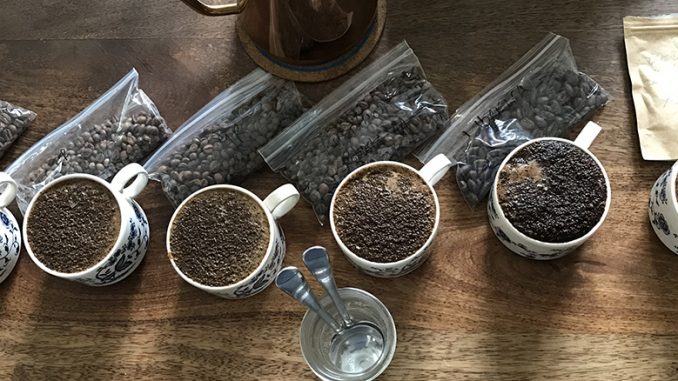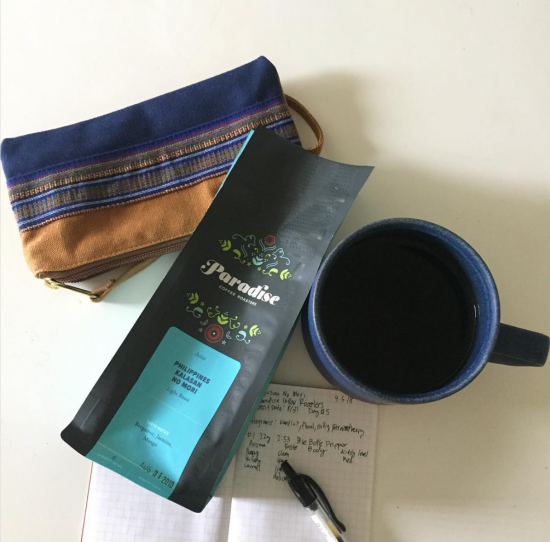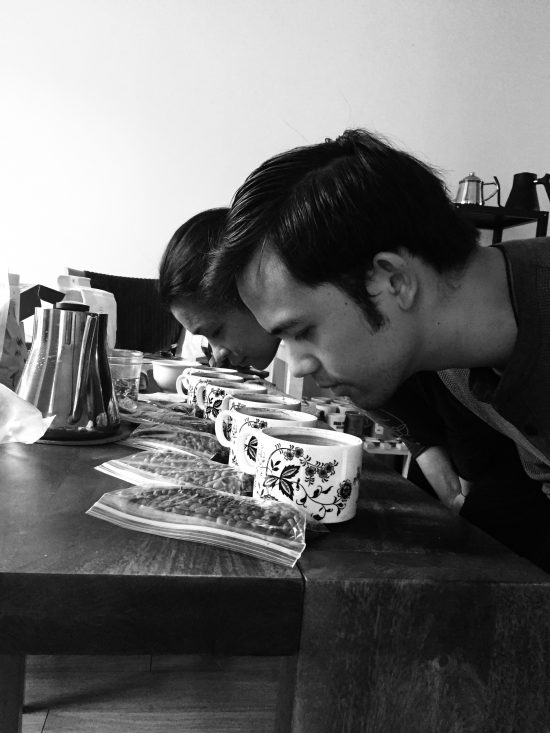
In 1889, an outbreak of coffee leaf rust destroyed virtually all of the Philippines’ coffee trees. Today, the nation’s specialty-coffee industry is back on the rise.
BY EMILY JOY MENESES
SPECIAL TO BARISTA MAGAZINE ONLINE
Photos courtesy of Matt Lapid
Although Asia plays a huge role in the coffee industry (Vietnam, Indonesia, and India rank as some of the world’s top coffee-producing countries), it has been over a century since the Philippines has been a substantial producer. Even though I was born to two immigrants from the Philippines, I didn’t even discover until recently that my family’s homeland produces coffee at all —and naturally, I had to learn more.

To start, the Philippines is one of very few countries that yields four different coffee varieties: Robusta, Arabica, Excelsa, and Liberica (locally known as kapeng barako). The Philippines, which is made up of over 7,000 islands, consists of a wide range of regional environments, from lowlands to mountaintops, creating a unique array of microclimates that allow the four varieties to grow.
Matt Lapid, a Los Angeles-based barista and Philippine coffee enthusiast, was first introduced to Philippine coffee by a coffee producer working with farmers in Bukidnon, a province located in the northern Mindanao region. Eventually, he got the chance to tour the region’s coffee farms and experience what makes Filipino coffee so unique.
“I think what makes Filipino coffee distinct is that there’s a wide range of how coffee from the Philippines can taste,” Matt shares. “This depends on the type of coffee, the roast style, and how it’s being consumed. Generally, the Philippines has a strong culture of instant coffee such as the 3 in 1 Nescafe sachets, which uses Robusta coffee. Then there’s kapeng barako (Liberica): a patriotic coffee that’s bold, strong, and distinctly Filipino—a lot of Filipinos like barako. Lastly, there’s specialty coffee (Arabica) from the Philippines, which I love.” Matt explains that coffee from the Philippines can have a wide array of tasting notes, from jasmine tea, citrus, chocolate, and mango, to jackfruit and suman (Filipino rice cake).
But how did the Philippine coffee scene come to be? Historians estimate that the country’s coffee production began around the 18th century in the city of Lipa, located in a province called Batangas. Locals extended the coffee harvest to other parts of the province, and Lipa rose to be known as the Philippines’ first coffee capital. Coffee production would continue to thrive in the region for over a century, rivaling the coffee production of other Asian countries. In 1880, the Philippines was the fourth-largest coffee exporter in the world, and the kapeng barako from Batangas was selling for five times the price of other Asian coffee varieties.
In an unfortunate twist of fate, an outbreak of coffee leaf rust in 1889 destroyed virtually all of Batangas’ coffee trees, and the region’s coffee producers would spend the next century trying to bounce back. Over the next several decades, they stayed afloat by exporting primarily Robusta coffee to America, where the instant coffee it was used to make was highly in demand. It wasn’t until 1980, when the Philippines joined the International Coffee Organization (ICO), that the islands’ coffee farmers would be able to embark on a new path: one that they hoped would lead them to their original glory.
Today, specialty coffee is slowly but surely rising in the Philippines, and the islands’ coffee farmers are making steady efforts to unionize and gain global recognition. While Robusta coffee remains prevalent throughout the country, they now grow Excelsa in multiple regions, and Arabica (what locals call kapeng tagalog) now accounts for most of the country’s coffee production.

“There’s a strong and vibrant market for specialty-coffee consumers all over Metro Manila and I would imagine all major cities in the Philippines,” Matt states. “Some brands that stick out (to me) are Toby’s Estate, Yardstick Coffee in Makati, and El Union Coffee in the surf town of La Union in Ilocos.” He also lists a number of U.S. roasters that highlight specialty Philippine coffee as well: San Diego-based Mostra Coffee, San Francisco-based Andytown Coffee Roasters, and Paradise Coffee Roasters in Hawaii.
Though specialty Philippine coffee is becoming a global affair, the kapeng barako that placed Batangas’ original coffee farmers on the global coffee stage won’t soon be forgotten. Though this variety accounts for a tiny fraction of the Philippines’ coffee production today, it’s still renowned nationally for its natural berry-like sweetness and distinct notes of chocolate, florals, and spice.
With its vibrant flavor profile, the kapeng barako is a lasting testament to the first coffee farms of the Philippines; it’s both an emblem of what was and a window into what will be. As the Philippines’ coffee farmers continue to strive for higher wages, better farming practices, and global recognition, coffee lovers like myself in the diaspora can’t help but cheer them on.

ABOUT THE AUTHOR
Based in Los Angeles, Emily Joy Meneses is a writer and musician passionate about culture and collective care. You can regularly find her at Echo Park Lake, drinking a cortado and journaling about astrology, art, Animal Crossing, and her dreams. Explore her poetry, short stories, and soundscapes on her website.

